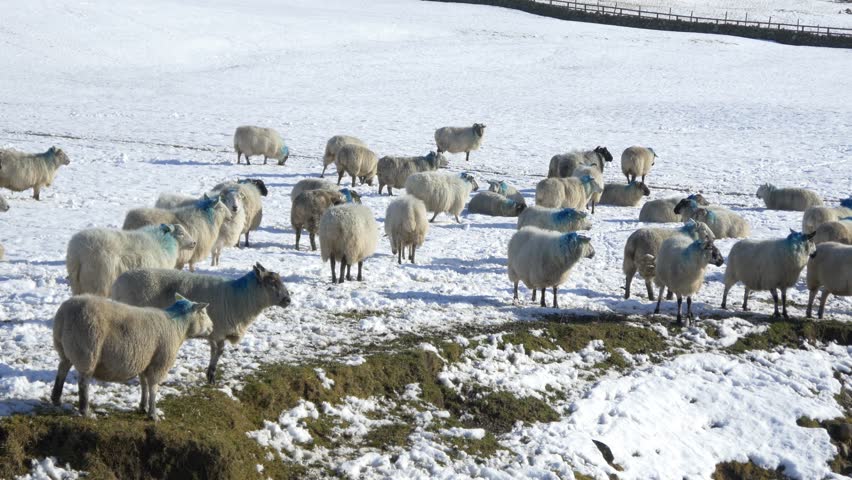Feeding Ewes In Mid-Pregnancy Under Snowy Conditions
5 February 2021Reports of more snow to come are concerning particularly for those that may have already been feeding supplementary forage since December. For those lambing in March/April the nutritional requirements of the ewe are still fairly low compared to close up lambing, however it is vital to the development of the placenta during this period that ewes do not face prolonged nutritional stress. Research suggests a higher mortality rate following maternal under nutrition in mid-pregnancy. Optimum placental size is essential for good birthweight, survival and growth rate of lambs. For fitter ewes (> BCS 3.5) that can afford to lose some condition this must be done gradually and no more than 0.5 a condition score.
Targets And Feed Guidelines In Mid-Pregnancy
| Lowland Ewe (60 - 80 kg) | Hill Ewe (40 - 60 kg) | |
|---|---|---|
| Target BCS | 3 - 3.5 | 2.5 |
| Metabolisable Energy Requirement (MJ/day | 7.2 - 9.6 | 4.8 - 6 |
| Grass or forage DM allowance (kg DM with quality of 10MJ/kg DM) | 0.72 - 0.96 | 0.46 - 0.6 |
The above guidelines show ewe’s requirements in mid-pregnancy, for lowland ewes a forage allowance of 0.72 – 0.9 kg of dry matter is the equivalent of around 3-4 kg of silage or 0.85– 1 kg of hay. For those that feel their forage stocks are stretched the first port of call is to carry out a forage budget to work out how much forage you have available and if you are short by how much. The FAS forage calculator is a quick and easy tool to use that can be downloaded onto your mobile https://play.google.com/store/apps/details?id=scot.fas.companionapp.
If your silage stocks are running low buying in additional forage such as hay and keeping your better quality forage for closer to lambing when her nutritional requirements rise by 60% will help to reduce reliance on concentrates.
Ewes in good condition shouldn’t need compound feeding, however those below condition score 2 that have been inaccessible due to snow will have lost weight, fleeces will be looking poor and sheep lacking strength. Don’t attempt to feed over generous amounts of feed as this risks rumen acidosis and predisposing to pregnancy toxaemia. Start by feeding 250 g/day of a good quality compound working up by 50 – 100 g/day increments to 0.45 kg/day along with ad-lib forage.
For hill ewes in reasonable condition they should be able to maintain their embryos in cold weather, unless snow or ice restricts access to normal grazing areas in which case feeding hay is needed at around 0.6 – 0.7 kg per head. High energy blocks/buckets are a great way to offer additional energy to ewes. Offer these to hill lambs this winter, in order to train them to eat blocks/buckets for the future. A guideline of 1 block/bucket per 30 ewes is recommended.
Mary Young, mary.young@sac.co.uk
Sign up to the FAS newsletter
Receive updates on news, events and publications from Scotland’s Farm Advisory Service

